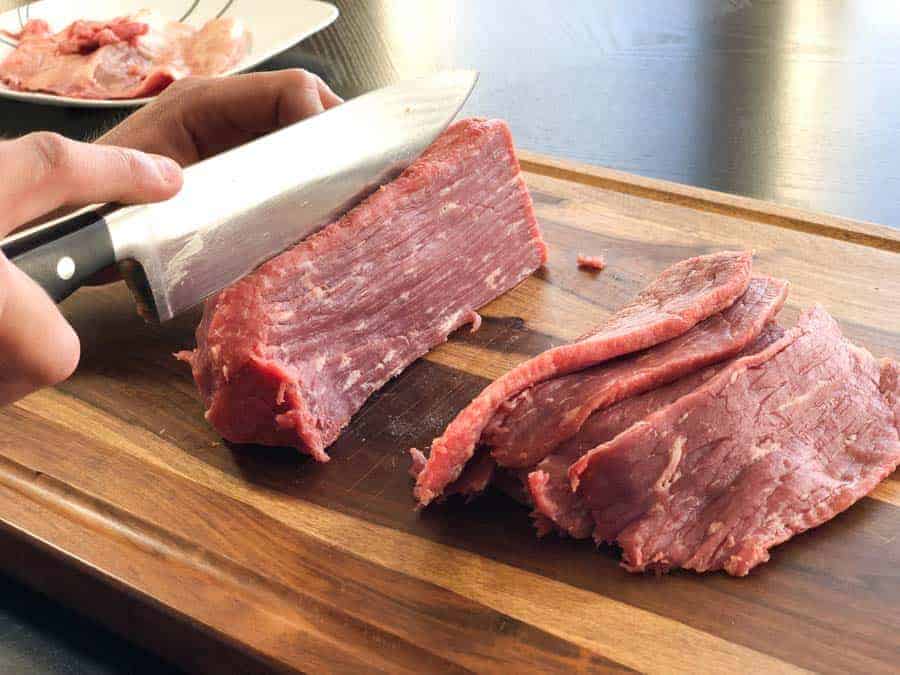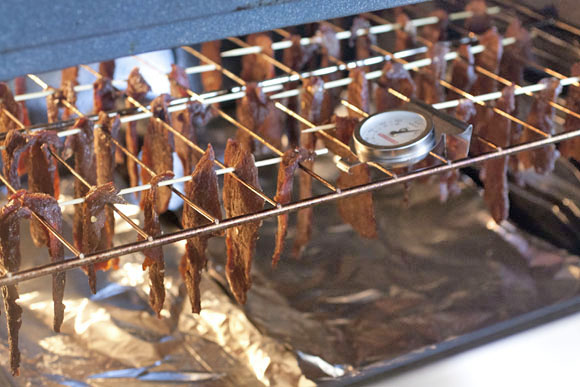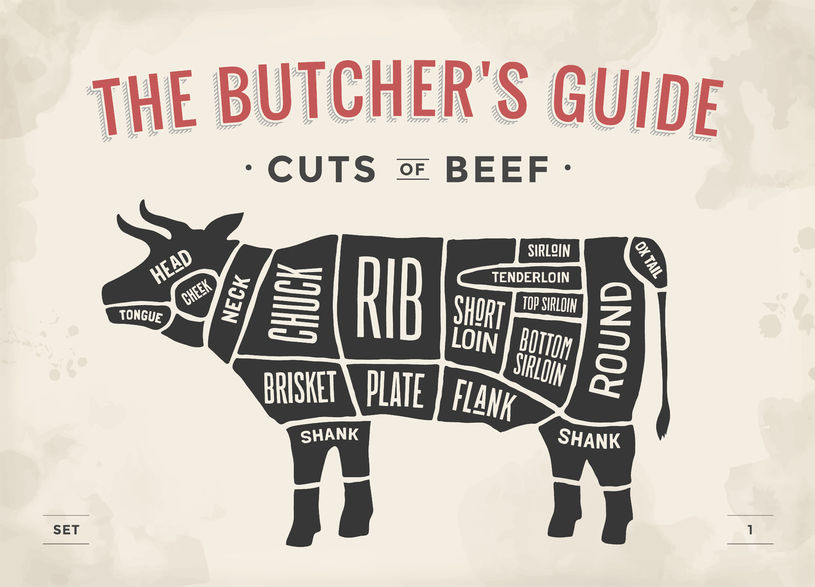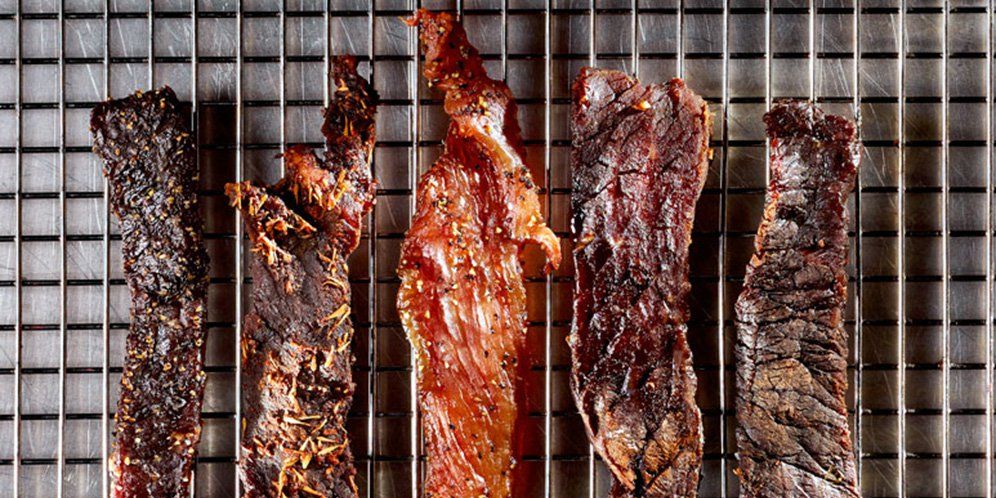Food
How to Make Your Own Beef Jerky and Biltong
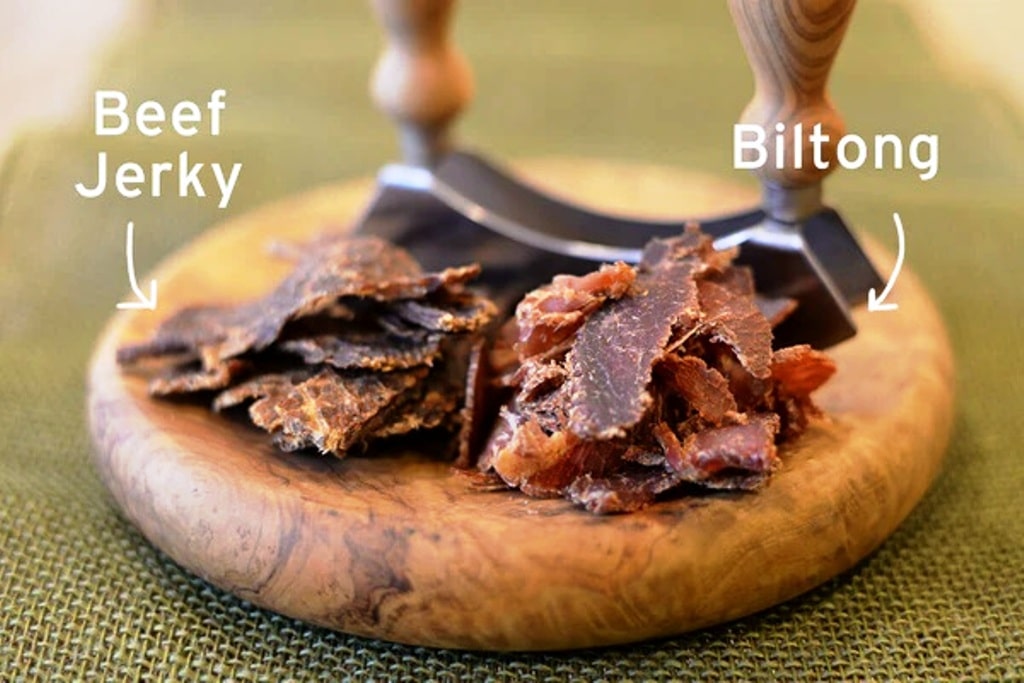
If you have some extra time and enjoy cooking, it can be extremely satisfying to make your own food and snacks at home. Making beef jerky and biltong at home can save you quite a bit of money, as the high cost of meat makes it significantly more expensive than store-bought beef jerky.
Both beef jerky and beef biltong are extremely easy to make, requiring only your choice of meat and an airtight container with room to dry out over several days or weeks. Read on to learn how to make your own beef jerky and biltong at home!
The differences between beef jerky, biltong, and droewors
When it comes to dried meats, there are a lot of different options out there. But what are the differences between beef jerky, biltong, and droewors?
Beef jerky is made by slicing meat into thin strips and then drying it. The drying process can be done either by air-drying or by using a dehydrator. Jerky typically has a chewy texture and a slightly sweet flavor.
Biltong is a South African dried meat that is made from beef, venison, or ostrich. The meat is first marinated in a vinegar-based solution and then dried. Biltong has a very dry texture and a strong, beefy flavor.
Droewors is a South African dried sausage that is made from beef and pork. The sausage is spiced with coriander and other spices before being dried. Droewors have a slightly chewy texture and a mild flavor.
Now that you know those differences, if you are interested in jerkies learn the difference of pork jerky vs beef jerky. They have two distinct flavors that your tastebuds and tummy would surey love.
The benefits of making your own beef jerky and biltong
Many people enjoy the taste of beef jerky and biltong, but not everyone knows that there are many benefits to making your own. Here are just a few reasons why you should consider making your own beef jerky and biltong at home:
1. You know exactly what goes into it. When you make your own beef jerky and biltong, you can control exactly what ingredients go into it. This means that you can avoid any unwanted additives or preservatives that may be found in store-bought varieties.
2. It’s cheaper. Homemade beef jerky and biltong is often much cheaper than buying it pre-made. This is especially true if you buy your beef in bulk and use a dehydrator to make the jerky and biltong.
3. You can customize the flavor. When you make your own beef jerky and biltong, you can choose the spices and flavorings that you add to it. This means that you can make it as mild or as spicy as you like.
4. It’s healthier. Because you control the ingredients, you can make sure that your beef jerky and biltong are as healthy as possible. This is especially important if you are watching your salt intake or are on a low-sodium diet.
5. It’s easy. Making your own beef jerky and biltong is actually very easy, especially if you have a dehydrator. You can find many recipes online or in cookbooks that will walk you through the process step-by-step.
Making your own beef jerky and biltong at home is a great way to save money, customize the flavor, and control the ingredients. If you’re looking for a healthier, tastier, and cheaper alternative to store-bought beef jerky and biltong, then you should definitely give it a try!
The best cuts of meat to use for beef jerky and biltong
There are many different cuts of meat that can be used for beef jerky or biltong, but some are better than others. The best cuts of meat to use for beef jerky or biltong are the leanest cuts of meat, such as the flank or round.
The leaner the meat, the less fat there is to render out during the drying process, which can make the beef jerky or biltong tough. Fat also causes the beef jerky or biltong to go rancid more quickly, so it is best to avoid using fatty cuts of meat.
The spices and flavors you can add to your beef jerky and biltong
Depending on where you are, beef jerky and biltong are going to be very different, with beef jerky in Australia, America, China, Nigeria, etc all having their own distinct tastes. There are a variety of spices and flavors that can be added to beef jerky and biltong.
Some common spices include salt, pepper, garlic, onion, and paprika. Other popular flavors include Worcestershire sauce, soy sauce, honey, and hot sauce. Experimenting with different combinations of spices and flavors can help you create a unique and tasty product.
The equipment you need to make beef jerky and biltong
Making your own beef jerky is a process that takes patience and time, but the end result is worth it. The key ingredient in both beef jerky and biltong is salt. The ratio of salt to meat will vary depending on how salty you want the final product.
In addition, there are several other ingredients that can be added for flavor including soy sauce, liquid smoke, black pepper, sugar, brown sugar or Worcestershire sauce. If using soy sauce or Worcestershire sauce as an ingredient in your mixture, you may need to add some water or another liquid as well.
The step-by-step process for making beef jerky and biltong
1. Preparing the meat – Trim all visible fat from the meat, then cut into strips about 3/4-inch wide by 3 inches long.
2. Marinating the beef – The marinade for beef jerky is a dry rub of salt, pepper, cayenne pepper, paprika, onion powder, garlic powder and brown sugar.
For biltong it’s a little more complicated with additional ingredients including vinegar or lemon juice as well as Worcestershire sauce or soy sauce plus some honey to balance out the saltiness or soy sauce if you want something sweeter (or both).
Making beef jerky and biltong is a simple process that only requires a few ingredients and some patience. The most important thing to remember when making either of these cured meats is to use lean cuts of beef with very little fat. Fat will not only spoil the flavor of the finished product, but can also cause the jerky or biltong to go rancid.
To make beef jerky, start by trimming all the fat off of a lean cut of beef. Then, cut the beef into thin strips, about ¼-inch thick. If you want your jerky to be more tender, you can pound the strips of beef with a meat mallet to tenderize them.
Next, mix together a marinade of your choice. There are many recipes available online or in cookbooks, or you can make your own. Once the marinade is mixed, place the beef strips in it and refrigerate for at least 4 hours, or overnight if possible.
After the beef has marinated, preheat your oven to the lowest temperature setting, typically between 150-200 degrees Fahrenheit. Line a baking sheet with foil or parchment paper and arrange the beef strips on the sheet. Bake the beef jerky in the oven for 3-4 hours, or until it is dry and slightly hard to the touch.
To make biltong, the process is similar, but the beef is not cooked. Simply trim the fat off of a lean cut of beef and slice it into thin strips. Mix together a biltong spice mix (again, there are many recipes available online or in cookbooks) and coat the beef strips in the spice mix. Place the beef on a wire rack over a baking sheet and refrigerate for 24-48 hours.
After the beef has cured, slice it into bite-sized pieces and enjoy!
The best cuts of beef for beef jerky and biltong
The best beef cuts for jerky are lean with a little fat, as the fat will make your jerky less dry. Beef cuts include sirloin tip, top round, top loin eye of round, flank steak or any other cut that is thinly sliced and cured.
The best cuts for biltong are tougher meat that’s heavily marbled with fat so it stays tender during the curing process. Ideally you want a cut of beef like brisket, rump or silverside because they’re cheap and high in fat.
#1: Sirloin Tip
#2: Top Round
#3: Top Loin Eye of Round
#4: Flank Steak
#5: Silverside (Brisket)
How to store beef jerky and biltong
Both beef jerky and biltong can be stored in the fridge for a few weeks, or even in the freezer for several months. To store your beef jerky, simply place it on a baking sheet lined with parchment paper.
Cover it with a second piece of parchment paper and then cover that baking sheet with another baking sheet. This will create an airtight seal for your meat so it doesn’t dry out. For biltong, wrap it up tightly in plastic wrap or aluminum foil to protect it from drying out.
Troubleshooting tips for making beef jerky and biltong
I love beef jerky. It’s a favorite snack of mine, but it can be difficult to find in stores so I figured out how to make my own.
First, you’ll need some meat. You can use any type of beef or venison that you want. I like using sirloin because it’s leaner and less tough than other cuts of beef, but you can use whatever is easiest for you to find.
Next, wash the meat with a vinegar-and-water solution (1 tablespoon of vinegar per gallon) before cooking it so that the final product doesn’t have an off smell or taste from the vinegar that was used during preparation.
Conclusion
Both beef jerky Australia and biltong are easy to make at home. The only difference is that beef jerky requires a dehydrator, whereas biltong can be dried in the oven or air-dried.
* Beef jerky Australia is an Australian term for beef jerky. Some think it’s synonymous with beef biltong, but there’s a difference! Beef jerky (Australian) uses ground beef as opposed to strips of meat. Ground beef is made into sausage links, coated in spice mixes, and then slowly smoked until done.
* Beef jerky in Australia is great because it can last months without refrigeration because of the salt content! It’s also perfect for taking on hikes or storing away from ants if you’re going camping – because they won’t touch it due to its high salt content.


